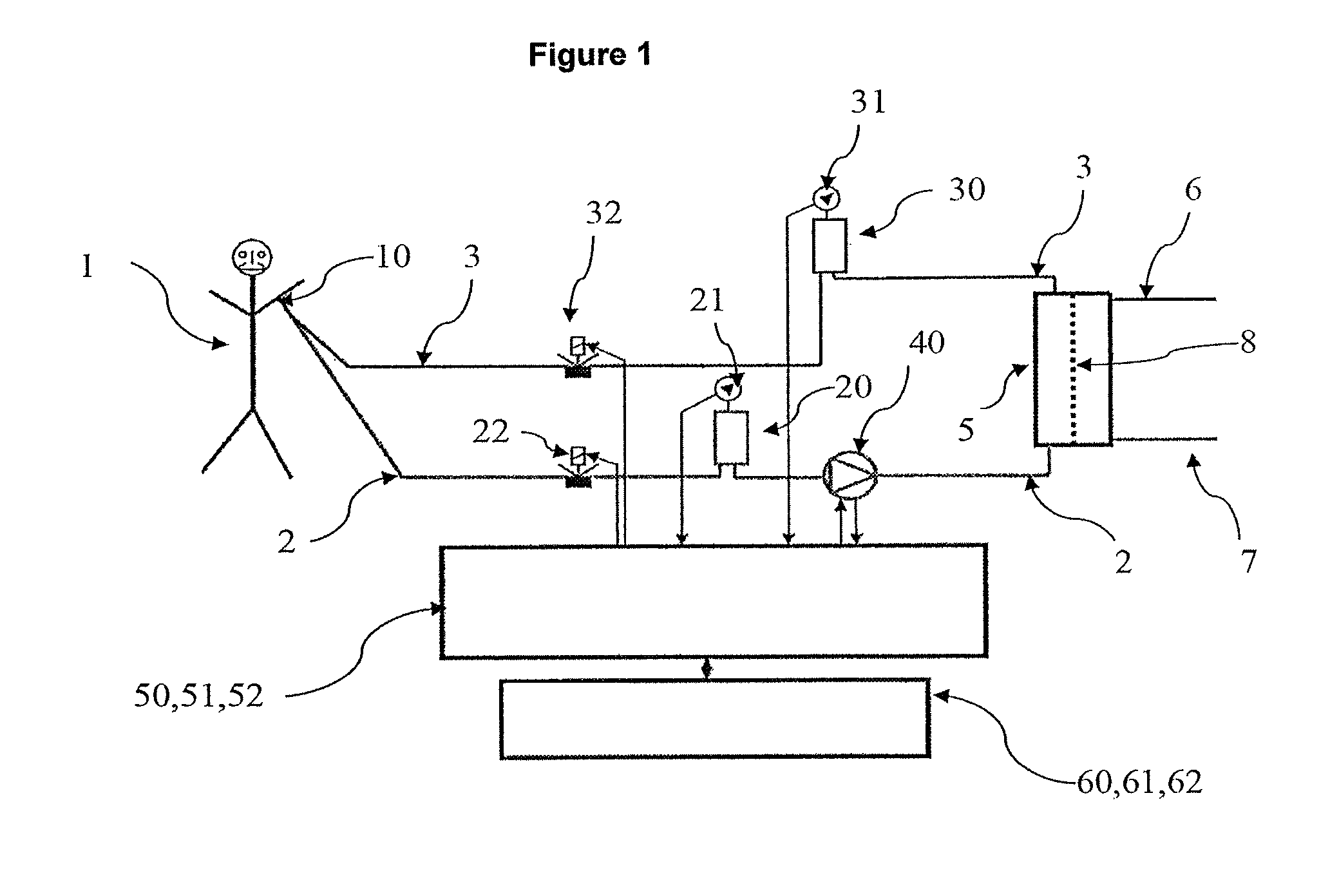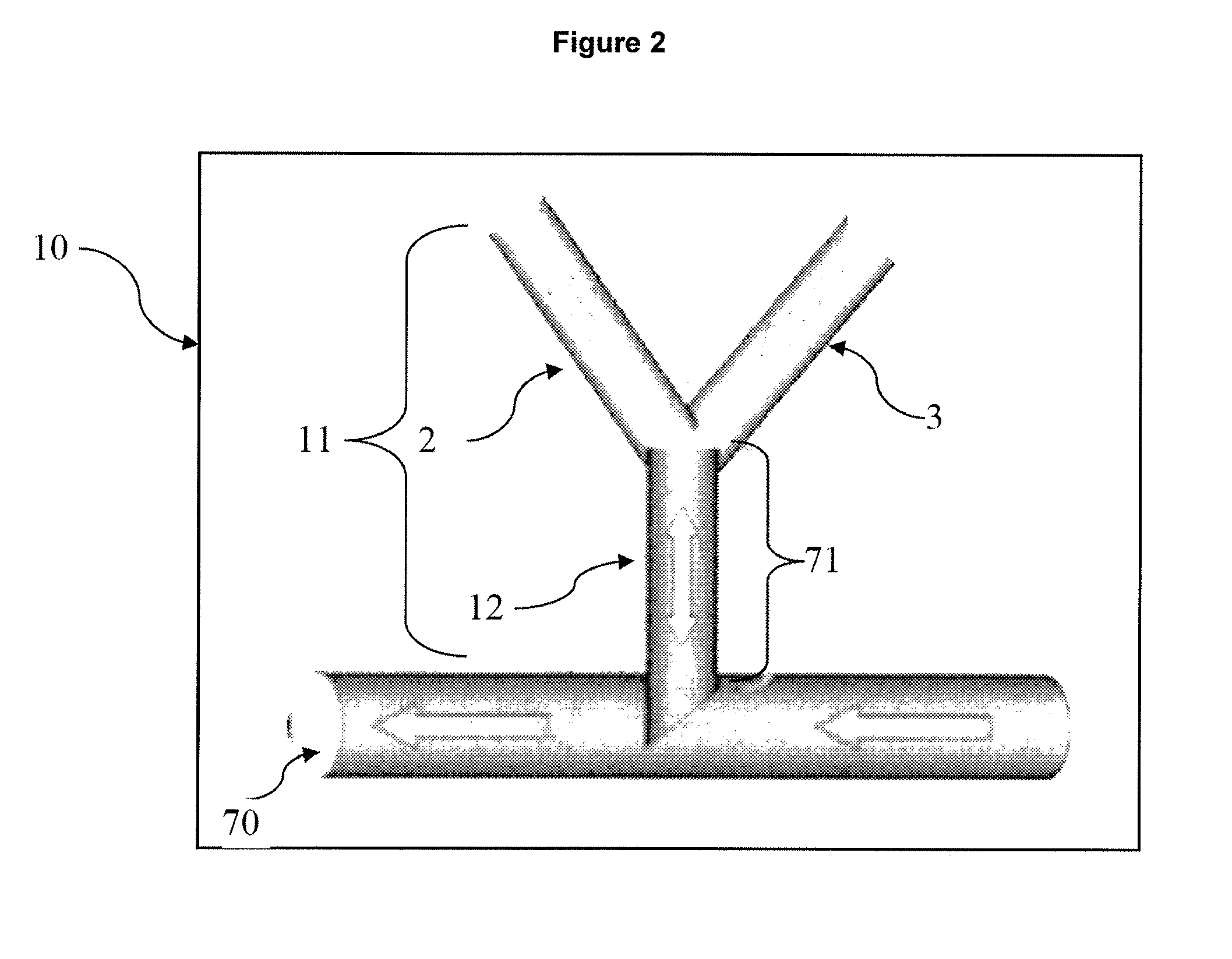Extracorporeal blood treatment apparatus
a treatment apparatus and extracorporeal technology, applied in the direction of reciprocating systems, medical devices, other medical devices, etc., can solve the problems of no effective blood flow out of the patient body and back into the patient body, no effective blood flow-out or no longer place, and the method described therein is significantly more complex
- Summary
- Abstract
- Description
- Claims
- Application Information
AI Technical Summary
Benefits of technology
Problems solved by technology
Method used
Image
Examples
Embodiment Construction
[0016]This problem is solved by an apparatus with the features described herein. Advantageous embodiments of the invention are claimed and set forth in the examples and the figures.
[0017]In contrast to the above cited prior art, the present invention is characterized by an automated control system, in which depending on the currently delivered blood volume of a phase (arterial or venous) and its deviation from a defined nominal value (Vnom), a disturbance is automatically detected and by continuous adjustment of the pump performance (up-and down-regulation), the operation of the apparatus for extracorporeal blood treatment can be maintained, as the nominal value of the phase volume (Vnom) is adapted to the actual value of the phase volume (Vact) by adjusting the pumping rate QBP of at least one pump (40) by means of a control device (50).
[0018]As used herein, following terms have the following meanings:[0019]tPhase: Is the period of a phase from the opening of the arterial line clos...
PUM
 Login to view more
Login to view more Abstract
Description
Claims
Application Information
 Login to view more
Login to view more - R&D Engineer
- R&D Manager
- IP Professional
- Industry Leading Data Capabilities
- Powerful AI technology
- Patent DNA Extraction
Browse by: Latest US Patents, China's latest patents, Technical Efficacy Thesaurus, Application Domain, Technology Topic.
© 2024 PatSnap. All rights reserved.Legal|Privacy policy|Modern Slavery Act Transparency Statement|Sitemap



